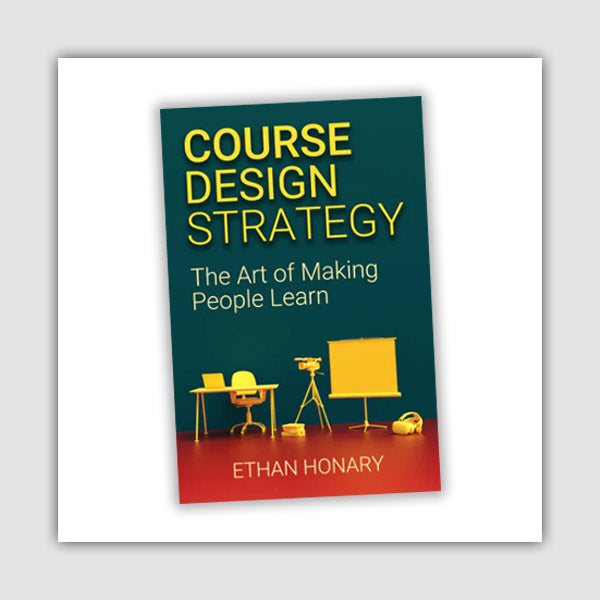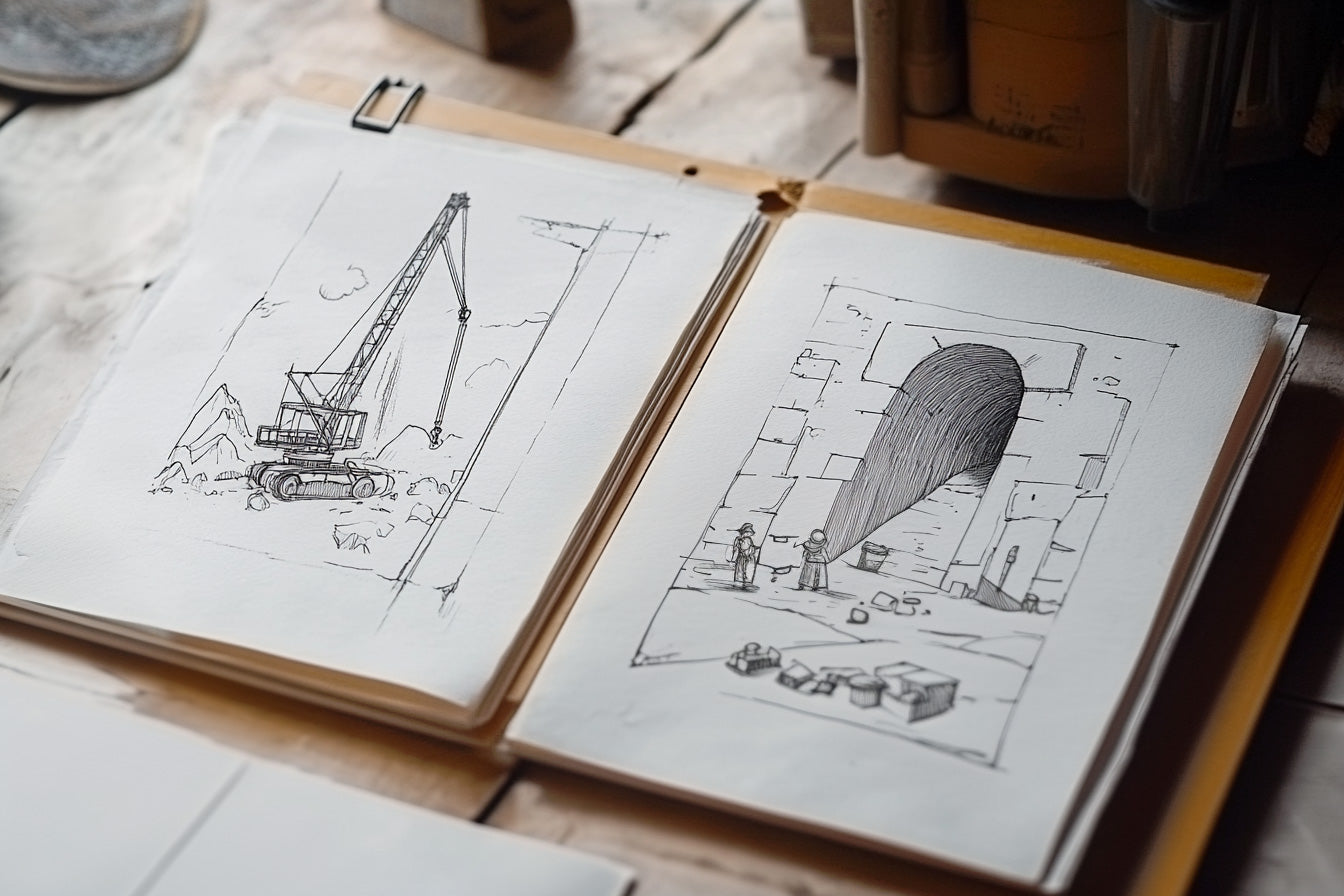Purpose
The advent of generative AI tools for image creation offers powerful new ways to enhance human creativity and produce visual content. Beyond their obvious potential for generating images or art, these tools can be used to encourage learners to think critically about visual content through cooperative, competitive, or interpretive tasks. Given the significant capabilities of generative AI tools and the broad range of training topics they can cover, there is considerable potential for incorporating such exercises. This introduction aims to provide an overview of these exercises, offering a template along with a series of examples and variations to illustrate the possibilities in the era of generative AI.
Here is how the overall pattern works:
- Introduce “The AI Art Gallery Challenge” as an engaging and innovative way to incorporate generative AI visualisation into online or instructor-led learning.
- Encourage learners to explore course concepts creatively through AI-generated imagery.
- Enhance learners’ understanding and memorisation by visualising abstract concepts.
- Create a collaborative learning environment where learners can share and discuss their creations.
- Use such images as catalysts to discuss important topics to meet training objectives.
You can run this exercise in face-to-face instructor-led courses while giving participants access to devices with the right AI tools or do it entirely online.
Objective
Motivate learners to creatively explore course concepts through generation of AI images and share such work with each other. Then delve into discussions about the visual content created and the process learners went through to make them. The aim is to make the learning experience fun, memorable, long lasting, active and maximally engaging.
What You Need
- Generative AI tools such as Midjourney or DALL·E accessible to all participants.
- An online image sharing platform or LMS to host the virtual “AI Art Gallery.”
- Optional handout of guidelines for team formation, role assignments, and theme selection.
Setup
- Team Formation and Role Assignment. Divide participants into small teams of three people or more. Get each team to select roles among themselves:
- Artists: They will create the visuals by writing the prompts in generative AI tools and refine the images as needed.
- Researchers: Theywill provide conceptual insights or conduct research online for the team when needed.
- Curators: They will organise the gallery to showcase the work of the team.
- Cooperative Work. Explain that at each stage the whole team should work together. The roles are there to indicate who is in charge of what, but the overall creative work should be carried out by the whole team through discussions, exploration, feedback, refinements and problem-solving techniques.
- Theme Selection. Instruct each team to select a theme or concept from the course material they wish to explore using AI-generated visuals. Ensure the themes are broad enough to allow creative freedom yet specific enough to be relevant to the course objectives.
- Creation and Exploration. Guide teams to use generative AI tools to create images representing their chosen theme. Encourage them to experiment with different prompts for accurate and imaginative visualisation and to document their process and findings.
- The AI Art Gallery Setup. Ask teams to prepare a virtual gallery presentation of their images, including explanations of how each image relates to and reflects their understanding of the course concept. Ask them to design these galleries to be interactive, allowing for feedback and queries from visitors. You may need to assign the right sharing platforms or coordinate this so preferably all teams use the same system to share content. This helps with consistency and simplicity.
- Gallery Exhibition and Discussion. Have teams present their galleries in a live session, where they explain their creative process and the concepts behind their images. Facilitate discussions for sharing insights and interpretations, enhancing understanding of the course material.
- Gamify the Process. You can optionally turn this into a game and make it competitive by getting learners to vote on best visuals or most useful content created by other teams.
- Decide on timing based on how you want to spread the exercise over multiple sessions. You need to give enough time to participants so they can be creative and explore the concepts. You also need to allow for teams to set up their content in galleries to share, then get feedback from others and then discuss in the class. As a result, it is best to run this exercise over multiple sessions with clear deadlines. For example, Team Formation and Role Assignment, Cooperative Work and Theme Selection can take place in one session. Then give coursework for Creation and Exploration and The AI Art Gallery Setup. Then get back everyone together in the class in the final session for Gallery Exhibition and Discussion and any rewards for Gamification.
- Allocate time for each of these sessions based on the training needs and how many learners you have.
Themes and Examples
Image generation is only one part of the exercise. Once images are generated, you can then use them as a catalyst to teach important lessons, which is really the main aim. Creating the AI images help keep learners engaged and make the lessons memorable. You can run this part in yet another session after the previous sessions on creating AI images are covered.
Remember that for the following exercises, you have several options on using images as source for the exercises:
- Get teams to continue working on their own AI generated images.
- Get teams to work on other teams’ AI generated images rather than their own.
- Get everyone to work on the same set of selected AI generated images. You can select this set yourself or let participants vote for them.
Here are some examples to illustrate how this works and see their applications:
1. Creative Writing and Storyboarding
- Setup: Pair generative AI imagery with creative writing exercises. After creating AI-generated images, instruct participants to write short stories or narratives inspired by these visuals.
- Ideal for Courses: Creative Writing, Storytelling, Emotional Intelligence.
- Engagement: Encourage learners to explore the narrative potential of their images, deepening creativity and emotional depth in storytelling.
2. Historical Reenactment through AI
- Setup: Have participants use generative AI to create images that depict historical events or figures with accuracy. Following this, ask them to present their images with a researched explanation of the event or figure’s significance.
- Ideal for Courses: History, Cultural Studies, Change Management.
- Engagement: Merge visual arts with historical analysis to engage learners in research skills and deepen understanding of historical contexts.
3. Brand Identity Creation
- Setup: Task teams with developing a brand identity package using generative AI, including logos, colour schemes, and promotional materials that reflect a hypothetical company’s values and target market.
- Ideal for Courses: Branding, Marketing, Design.
- Engagement: Stimulate creativity and strategic thinking as learners navigate the process of brand development from conceptualisation to visual execution.
4. Environmental Impact Visualisation
- Setup: Instruct learners to create before-and-after imagery with generative AI to show the impact of environmental change or conservation efforts on specific ecosystems.
- Ideal for Courses: Environmental Science, Geography, Sustainability.
- Engagement: Enhance awareness and understanding of environmental issues by visually representing the effects of ecological changes, promoting a sense of responsibility and potential action.
5. Interpersonal Skills through Emotional Intelligence Portraits
- Setup: Use generative AI to have participants create portraits that express various emotional states. Then, conduct activities where they must interpret the emotions depicted and discuss the importance of understanding emotions in effective communication.
- Ideal for Courses: Emotional Intelligence, Communication Skills, Acting.
- Engagement: Promote empathy and emotional awareness by encouraging learners to interpret and discuss the subtleties of emotional expression, essential in interpersonal communication and acting.
6. Cross-Cultural Exchange Exhibition
- Setup: Direct participants to use generative AI to create images that represent different cultures’ perspectives on a common theme, such as peace, prosperity, or tradition. Afterwards, host a virtual exhibition where they present and discuss the cultural significance of their images.
- Ideal for Courses: Diversity, Cultural Studies, Global Citizenship.
- Engagement: Encourage learners to research and reflect on diverse cultural values and perspectives, enhancing global awareness and empathy.
7. Future Technology Predictions
- Setup: Ask participants to envision and create AI-generated images of future technological advancements within a specific field, such as medicine, transportation, or education. Have them present their visions and discuss the potential impacts of these technologies on society.
- Ideal for Courses: Technology, Futurism, Innovation Management.
- Engagement: Encourage critical thinking by having learners explore and debate the possibilities and challenges of future technologies.
8. Psychological Concepts in Visual Form
- Setup: Assign participants to illustrate psychological concepts or mental health conditions using generative AI imagery. Follow up with a discussion on the images’ accuracy in depicting these concepts and their potential impact on public awareness and understanding.
- Ideal for Courses: Psychology, Mental Health Awareness, Counselling Skills.
- Engagement: Promote empathy and understanding by visualising complex psychological concepts, aiding in destigmatisation and education.
9. Architectural Wonders Reimagined
- Setup: Challenge participants to reimagine famous architectural landmarks using generative AI, incorporating futuristic or sustainability-focused elements. Request that they present their designs alongside a rationale for their modifications.
- Ideal for Courses: Architecture, Design, Sustainable Development.
- Engagement: Spark creativity and environmental consciousness by encouraging innovative thinking in the redesign of existing structures for a sustainable future.
10. Mythology and Folklore Revival
- Setup: Have participants use generative AI to bring myths and folklore from various cultures to life through visual storytelling. Organise a sharing session where they narrate the stories behind their images, exploring the themes and morals conveyed.
- Ideal for Courses: Literature, Mythology, Storytelling.
- Engagement: Deepen appreciation for storytelling traditions and cultural heritage by visualising and sharing timeless tales in a modern medium.
11. Science Concepts Graphics or Animation
- Setup: Instruct learners to create graphics or animations using generative AI that illustrate scientific concepts, such as the water cycle, photosynthesis, or the theory of relativity.
- Ideal for Courses: Science, Physics, Biology.
- Engagement: Facilitate a deeper understanding of complex scientific theories through visual animations, encouraging learners to explain their creations in their own words.
12. Abstract Art Interpretation
- Setup: Use generative AI to create abstract art pieces. Participants then interpret the art, discussing emotions, thoughts, and what each piece communicates to them.
- Ideal for Courses: Art Appreciation, Psychology, Creative Thinking.
- Engagement: Enhance critical thinking and emotional intelligence by interpreting abstract visuals, promoting open-ended discussion and personal insight.
13. Mathematical Concepts Visualised
- Setup: Challenge participants to visualise mathematical concepts or problems using generative AI, such as geometric patterns, fractals, or graph theory illustrations.
- Ideal for Courses: Mathematics, Geometry, Computer Science.
- Engagement: Make abstract mathematical theories tangible and visually engaging, aiding comprehension and sparking curiosity.
14. Culinary Design Challenge
- Setup: Task participants with using generative AI to design innovative dishes or culinary presentations, then discussing the inspiration and concept behind their designs.
- Ideal for Courses: Culinary Arts, Nutrition, Food Science.
- Engagement: Stimulate creativity and a deeper appreciation for culinary aesthetics, blending gastronomy with artistic expression.
15. Fashion Forward
- Setup: Encourage participants to use generative AI to forecast future fashion trends or create avant-garde clothing designs, explaining their vision for the future of fashion.
- Ideal for Courses: Fashion Design, Marketing, Trend Analysis.
- Engagement: Explore the intersection of technology and fashion, encouraging forward-thinking and innovation in design.
16. Language Learning through Storytelling
- Setup: Combine generative AI imagery with language learning, where participants create stories in a target language based on images generated by AI.
- Ideal for Courses: Language Learning, ESL, Communication Skills.
- Engagement: Improve language skills and cultural understanding through storytelling, using imagery as a universal language to bridge communication gaps.
17. Short Documentary Creation
- Setup: Guide participants to use generative AI to create a series of images that narrate a story about a topic related to the course topics. Then, have them compile these images into a short documentary, adding voiceovers or text to provide context and narrative.
- Ideal for Courses: Documentary Filmmaking, Social Studies, Media Studies, Technical Demo.
- Engagement: Encourage critical thinking by getting participants to research and tell stories about important lessons in the course. Get them to use descriptive AI-generated imagery to enhance their own understanding of the topics as well understanding of other learners.
18. Assertiveness in Conversation Visuals
- Setup: Use generative AI to create scenarios depicting assertive versus passive or aggressive interactions. Have participants identify assertive behaviours and discuss alternative responses using visual content, focusing on expressions and body language.
- Ideal for Courses: Assertiveness Training, Communication Skills, Conflict Management, Body Language.
- Engagement: Improve understanding of assertiveness in communication, helping learners to visually differentiate and practice assertive behaviour in various contexts.
Timing
Explaining the Exercise: 15 minutes
Activity: Multi-stage exercise and timing depends on the scope of the exercise and number of participants. See notes on timing under the Setup heading.
Group Feedback: 20 minutes
Discussion
- After the exhibition, organise a reflection session for teams to discuss their learning journey and discoveries about the course concepts through visual creation.
- Encourage participants to give feedback on other galleries, highlighting creative approaches and insightful interpretations.
- Award recognition for creativity, conceptual understanding, and engagement, such as “Most Innovative Visual” or “Best Conceptual Understanding.”
- Select outstanding visuals for integration into the course study materials, acknowledging the creators’ contributions.
Use this exercise in online platforms, LMS systems or even in instructor-led courses and leverages the unique capabilities of generative AI to create highly engaging state-of-the-art session.
Variations
Generative AI tools are in their infancy and are bound to become significantly more powerful. They will become an integral part of our workflow and such exercises help participants get used to them.
Soon we will have sophisticated AI generated video and audio production tools and you can use the same idea here to apply to a much richer and more powerful medium. The Short Documentary Creation example given above could then be created using AI generated videos as opposed to a series of AI generated images, along with AI generated music, AI generated voiceover and AI generated effects. It could also lead to exercises such as the following, for fun or for elaboration on a given training course topic, depending on what you are teaching:
Music Video Creation
- Setup: Challenge learners to create music videos for existing or original songs using generative AI visuals, focusing on how the imagery complements the music’s themes. You can bias this exercise based on the topic you are teaching, such as focusing on visuals, audio, composition, animation, graphics, novelty, branding, marketing, etc.
- Ideal for Courses: Music Appreciation, Video Production, Digital Art, Marketing.
- Engagement: Encourage the exploration of music and visuals as interconnected forms of art, enhancing creative expression and multimedia skills.
The sky is the limit with ever more powerful AI tools. It is an exciting era and is just the beginning…
Soft Skills Training Materials
Get downloadable training materials
Online Train the Trainer Course:
Core Skills
Learn How to Become the Best Trainer in Your Field
All Tags
Training Resources for You

Course Design Strategy
Available as paperback and ebook

Free Training Resources
Download a free comprehensive training package including training guidelines, soft skills training activities, assessment forms and useful training resources that you can use to enhance your courses.

Our Comprehensive Guide to Body Language

Train the Trainer Resources
Get Insights - Read Guides and Books - Attend Courses
Training Materials
Get downloadable training materials on: Management Training, Personal Development, Interpersonal Development, Human Resources, and Sales & Marketing














Leave a comment
All comments are moderated before being published.
This site is protected by hCaptcha and the hCaptcha Privacy Policy and Terms of Service apply.